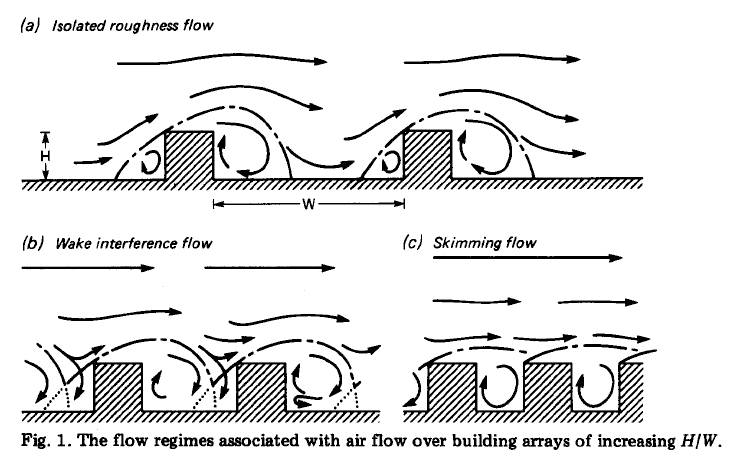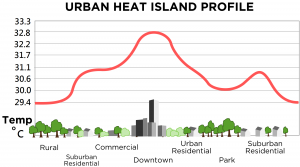Today, about half of the world population are living in major or minor cities (1), the urban heat island effect thus affects approximately 3.5billion people. Therefore though this issue may be deemed not so urgent, it is significant. I prefer to call this an effect, instead of an issue. The Urban heat island effect.
Basically cities are generally warmer than other natural landforms. It sounds really intuitive I know, but most layman attributes the increase in warmth to simply heat generated by human activity, which includes heat produced by industries, electronics that we use that generates lots of ambient heat collectively, or cars and buses, transportation. That is true, but I would also like to enlighten you about other major factors causing this urban heat island effect.
Firstly, removal of trees and vegetation to pave way for cities contribute. Trees and vegetation generally cool down the area by evapo-transpiration. Thus removal of such greenery diminishes the efficacy of natural heat dispersion.
Secondly, thermal properties of human construction are also a main cause. Roofs make up about a quarter of exposed surface land in cities (2). Furthermore roads and buildings that cover much of the rest of the land area usually have high thermal absorption and low albedo, trapping heat within the city.
 (3)
(3)
Also tall buildings are tightly packed in and within the city area, contributing to another phenomena called Urban Canyon. Simply put these high rise redirect winds flowing overhead and trap them into small vortices between buildings. This also vastly reduces the wind speed and consequently the capacity to dissipate heat out of the urban area. (3)
UHI may be unhealthy, not just skin deep, but ozone has been shown to favour warmer temperatures (4) and thus a cloud of ozone may form over urban areas. Ozone in the stratosphere is the “good” ozone that absorbs and reflects harmful UV rays, however ozone in the troposphere, which is what is directly above us, is bad, as it is toxic. Also increased temperatures may prove detrimental to the already scarce wildlife present in cities.
Also what happens if the city gets hotter? We turn on the air conditioner! Bravo. Everything seems to be somehow related to global warming, energy wastage and un-sustainability!
Some countries and buildings have noticed this problem and thus implemented various town planning and building initiatives that include roof gardens, or more parks and lakes, generally green areas and water bodies to curb the heat. This is great and I am grateful that authorities are taking notice of this.
Well, who doesn’t like greenery?
References
- Human Population: Urbanization. Prb.org. Retrieved 28 September 2016, from http://www.prb.org/Publications/Lesson-Plans/HumanPopulation/Urbanization.aspx
- Susca, T., Gaffin, S. and Dell’Osso, G. (2011). Positive effects of vegetation: Urban heat island and green roofs. Environmental Pollution, 159(8-9), pp.2119-2126. Retrieved from: http://www.sciencedirect.com.libproxy1.nus.edu.sg/science/article/pii/S0269749111001539
- Urban Street Canyons. Web.mit.edu. Retrieved 28 September 2016, from http://web.mit.edu/nature/archive/student_projects/2009/jcalamia/Frame/05_canyonwind.html
- Ozone an Added Health Concern in Urban ‘Heat Islands’. Wpsdlocal6.com. Retrieved 28 September 2016, from http://www.wpsdlocal6.com/story/6781504/ozone-an-added-health-concern-in-urban-heat-islands
